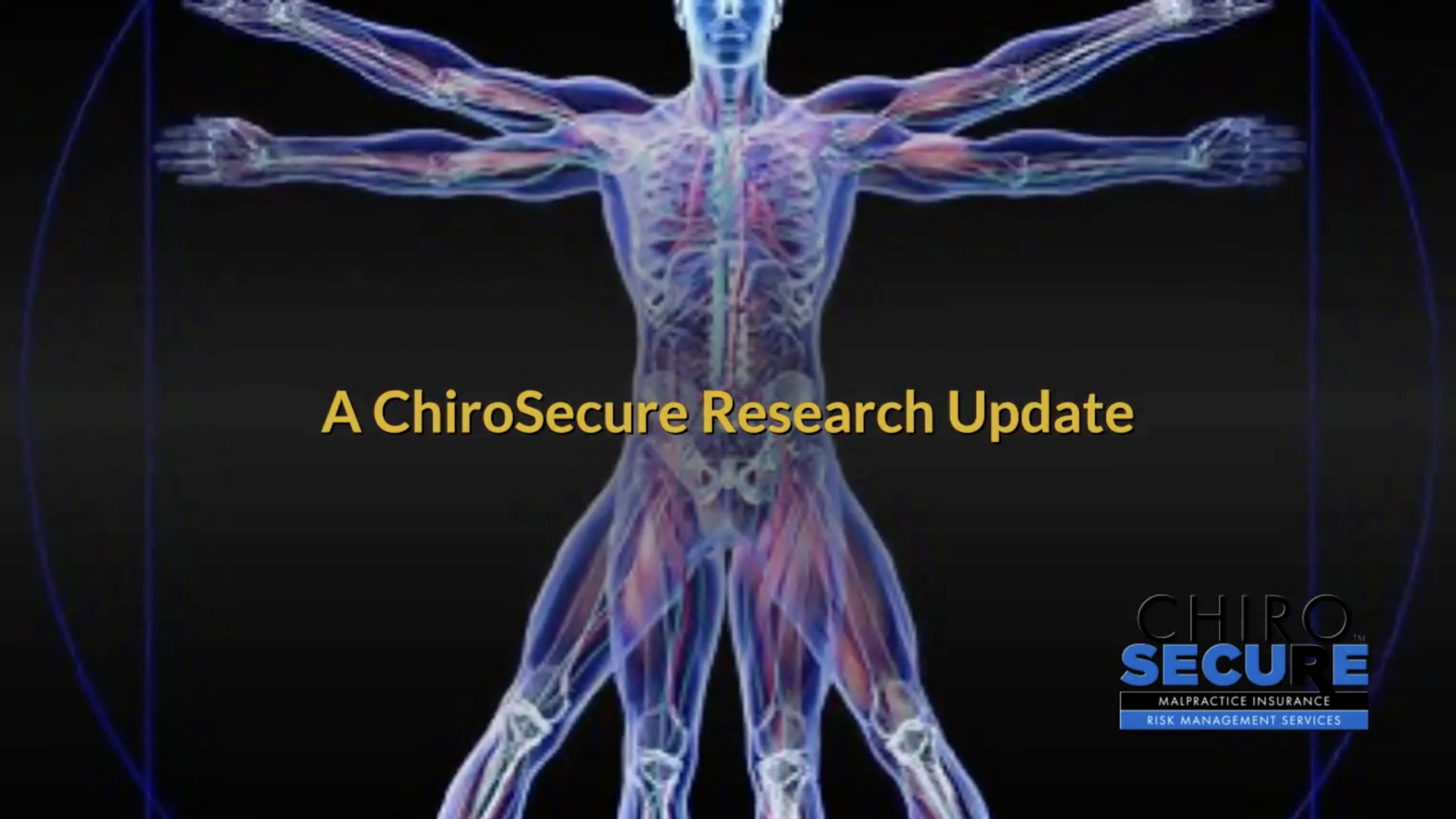Investigating the Effects of Chiropractic Spinal Manipulation on EEG in Stroke Patients
A ChiroSecure Research Update
Investigating the Effects of Chiropractic Spinal Manipulation on EEG in Stroke Patients ABSTRACT: The purpose of this study was to evaluate the impact of chiropractic spinal manipulation on the early somatosensory evoked potentials (SEP) and resting-state electroencephalography (EEG) recorded from chronic stroke patients.
DISCUSSION: 17 male patients (53 ± 12 years old) participated in this randomized cross-over study. The patients received chiropractic spinal manipulation and control intervention, in random order, separated by at least 24 hours. EEG was recorded before and after each intervention during rest and stimulation of the non-paretic median nerve. For resting-state EEG, the delta-alpha ratio, brain-symmetry index, and power-spectra were calculated. For SEPs, the amplitudes and latencies of N20 and N30 peaks were assessed. Source localization was performed on the power-spectra of resting-state EEG and the N30 SEP peak.
Following spinal manipulation, the N30 amplitude increased by 39%, which was a significant increase compared to the control intervention (p less than 0.01). The latency and changes to the strength of the cortical sources underlying the N30 peak were not significant. The N20 peak, the resting-state power-spectra, delta-alpha ratio, brain-symmetry index, and resting-state source localization showed no significant changes after either intervention.
CONCLUSION: A single session of chiropractic spinal manipulation increased the amplitude of the N30 SEP peak in a group of chronic stroke patients, which may reflect changes to early sensorimotor function. More research is required to investigate the long-term effects of chiropractic spinal manipulation, to better understand what impact it may have on the neurological function of stroke survivors.
REFERENCE: Navid MS, Niazi IK, Lelic D, et al. Investigating the Effects of Chiropractic Spinal Manipulation on EEG in Stroke Patients. Brain Sci. 2020;10(5):253. Published 2020 Apr 27. doi:10.3390/brainsci10050253. https://pubmed.ncbi.nlm.nih.gov/32349288/






